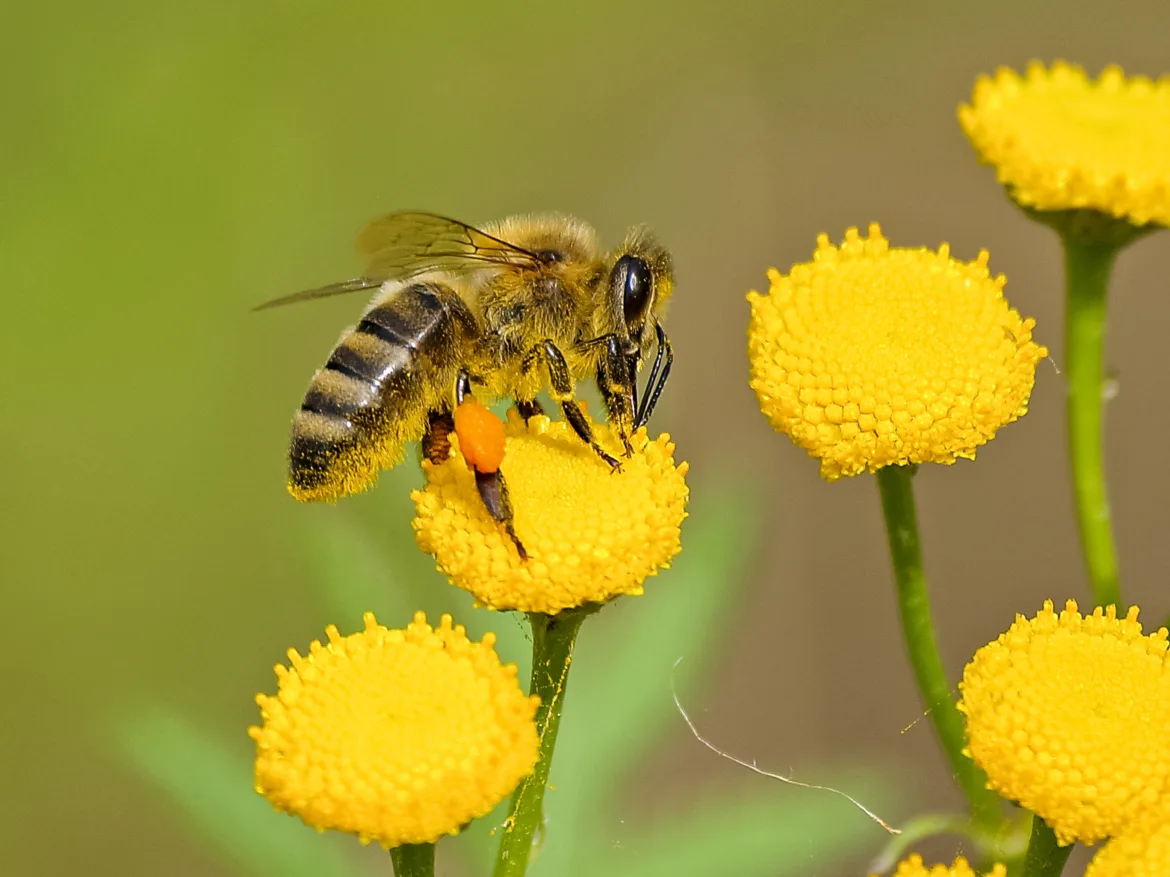Introduction
When it comes to honey, there are countless varieties available on the market. Among them, two popular choices are manuka honey and raw honey. Both have gained attention for their potential health benefits and unique properties. In this article, we will explore the differences between manuka honey and raw honey, examining their production methods, nutritional profiles, medicinal properties, and more. So, let’s dive in and uncover the sweet secrets of manuka honey and raw honey!
Table of Contents
Manuka Honey: Nature’s Gold
Manuka honey is a type of honey that originates from New Zealand. It is derived from the nectar of the manuka tree (Leptospermum scoparium), which is native to the country. What sets manuka honey apart from other types of honey is its unique antibacterial properties, attributed to the presence of methylglyoxal (MGO), a compound found in significant amounts in manuka flowers.
Research suggests that manuka honey may possess potent antimicrobial activity, making it an excellent natural remedy for various health conditions. Its high MGO content gives it a distinctive taste and a thicker, more viscous consistency compared to other types of honey.

Raw Honey: Straight from the Hive
Raw honey, as the name suggests, is honey in its purest form, straight from the hive. It is obtained by extracting honeycombs from beehives and filtering them minimally to remove impurities such as beeswax and bee pollen. Unlike processed honey, which undergoes pasteurization and filtration, raw honey retains its natural enzymes, antioxidants, and other beneficial components.
The flavour and colour of raw honey can vary depending on the floral sources the bees collect nectar from. It is often appreciated for its robust taste and diverse nutrient profile, making it a popular choice among health-conscious individuals.
The Production Process
Manuka Honey Production
The production of manuka honey involves several distinct steps to ensure its purity and quality. Here is an overview of the process:

- Hive Placement: Beekeepers position their hives in areas where manuka trees grow abundantly, allowing the bees to collect nectar exclusively from manuka flowers.
- Nectar Collection: Bees forage on the manuka flowers, collecting their nectar. They store the nectar in their specialized honey stomachs.
- Enzymatic Conversion: Within the bee’s honey stomach, the nectar undergoes enzymatic conversion, breaking down complex sugars into simpler forms.
- Regurgitation and Evaporation: Back at the hive, the bees regurgitate the partially digested nectar into the honeycomb cells. They then fan their wings to speed up the evaporation process, reducing the moisture content of the nectar.
- Ripening and Sealing: As the moisture content decreases, the bees seal the honeycomb cells with beeswax, allowing the nectar to ripen into honey over time.
- Extraction: Beekeepers carefully extract the ripe honeycombs from the hive and use specialized equipment to separate the honey from the wax and other impurities.
- Packaging: The extracted honey is packaged, often in dark-coloured containers to protect it from light and preserve its quality.
Raw Honey Production
The production of raw honey involves fewer processing steps compared to manuka honey. Here’s an overview of the production process for raw honey:

- Hive Placement: Beekeepers position their hives in areas with abundant floral sources, allowing bees to collect nectar from various flowers.
- Nectar Collection: Bees forage on flowers and collect their nectar, storing it in their honey stomachs.
- Enzymatic Conversion: Similar to manuka honey production, the bees’ honey stomachs break down the complex sugars in the nectar into simpler forms.
- Regurgitation and Evaporation: Back at the hive, the bees regurgitate the partially digested nectar into the honeycomb cells. The evaporation process begins, reducing the moisture content.
- Ripening and Sealing: Bees seal the honeycomb cells with beeswax, allowing the nectar to ripen into honey over time.
- Extraction: Beekeepers extract the honeycombs from the hive and separate the honey from the wax with minimal processing.
- Packaging: The raw honey is usually strained to remove larger impurities and then packaged for distribution, often in glass containers to maintain its quality.

Nutritional Value
Both manuka honey and raw honey offer various nutrients and bioactive compounds that contribute to their health benefits. Let’s take a closer look at the nutritional profiles of these honey varieties:
Manuka Honey Nutritional Profile
- Calories: 64 per tablespoon
- Carbohydrates: 17 grams per tablespoon
- Sugars: 16 grams per tablespoon
- Protein: Negligible amounts
- Fat: Negligible amounts
- Vitamins and Minerals: Contains trace amounts of vitamins B2, B3, B5, and minerals like zinc, copper, iron, and magnesium
Raw Honey Nutritional Profile
- Calories: 64 per tablespoon
- Carbohydrates: 17 grams per tablespoon
- Sugars: 16 grams per tablespoon
- Protein: Negligible amounts
- Fat: Negligible amounts
- Vitamins and Minerals: Contains trace amounts of vitamins B2, B3, B5, and minerals like zinc, copper, iron, and magnesium
Both manuka honey and raw honey are predominantly composed of carbohydrates, primarily in the form of sugars. While the nutritional profiles may be similar, the specific bioactive compounds found in manuka honey, such as MGO, contribute to its unique properties and potential health benefits.

Antibacterial Properties
One of the most significant differences between manuka honey and raw honey lies in their antibacterial properties. Manuka honey, with its high MGO content, exhibits potent antibacterial activity, making it a popular natural remedy for wound healing and combating bacterial infections.
MGO is formed in manuka honey when the bees convert dihydroxyacetone, a compound present in the manuka flower nectar, into MGO during the honey ripening process. The higher the MGO content, the greater the antibacterial potential of manuka honey.
Raw honey, although it possesses some antibacterial properties, does not contain the same concentrated levels of MGO found in manuka honey. However, it still exhibits mild antimicrobial effects due to the presence of hydrogen peroxide and other enzymes.

Healing and Medicinal Properties
The healing and medicinal properties of manuka honey and raw honey have long been recognized in traditional medicine practices. Let’s explore the potential benefits of each:
Manuka Honey’s Medicinal Properties
- Wound Healing: The antimicrobial properties of manuka honey make it an effective topical treatment for wounds, burns, and skin infections. It creates a protective barrier, reduces inflammation, and promotes tissue regeneration.
- Digestive Health: Manuka honey may help soothe digestive issues such as acid reflux, gastritis, and stomach ulcers. It possesses anti-inflammatory properties and helps maintain a healthy balance of gut bacteria.
- Immune System Support: The antioxidants in manuka honey help support the immune system by neutralizing harmful free radicals and reducing oxidative stress.
Raw Honey’s Medicinal Properties
- Cough and Cold Relief: Raw honey is often used as a natural remedy for coughs and colds. It can soothe sore throats, alleviate coughing, and provide relief from congestion.
- Allergy Relief: Consuming raw honey sourced from local bees may help alleviate seasonal allergies. The theory is that trace amounts of local pollen in the honey can act as a natural desensitizing agent.
- Energy Boost: Raw honey serves as a natural source of carbohydrates, providing a quick energy boost during physical activity or as a natural sweetener in meals and beverages.

Culinary Uses
Both manuka honey and raw honey add a touch of sweetness to various culinary creations. Their distinct flavours and textures make them versatile ingredients in the kitchen. Here are some popular culinary uses for each:
Manuka Honey Culinary Uses

- Sweeteners: Use manuka honey as a natural sweetener in tea, coffee, smoothies, or baked goods.
- Marinades and Glazes: Its rich flavour pairs well with marinades and glazes for meat, poultry, and seafood.
- Dressings and Sauces: Manuka honey can add depth and complexity to salad dressings, sauces, and dips.
Raw Honey Culinary Uses

- Baking: Incorporate raw honey into baked goods such as cakes, cookies, and bread for a natural sweetener.
- Drizzled over Foods: Enjoy raw honey drizzled over yoghurt, oatmeal, pancakes, or fresh fruits for added sweetness.
- Enhancing Flavors: Use raw honey to balance and enhance the flavours of savoury dishes like roasted vegetables, cheese, or charcuterie boards.
Manuka Honey vs Raw Honey: Which One Should You Choose?
Choosing between manuka honey and raw honey depends on your personal preferences and specific health needs. Consider the following factors:
- Taste and Flavour: Manuka honey has a distinct, earthy taste and thicker consistency, while raw honey’s flavour can vary depending on the floral sources.
- Antibacterial Properties: If you’re looking for honey with potent antibacterial activity, manuka honey is the better choice due to its high MGO content.
- Wound Healing: Manuka honey’s unique properties make it an excellent choice for wound healing and skincare applications.
- Local Sourcing: Raw honey sourced locally may offer benefits for allergies and immune support, especially if the honey contains traces of local pollen.
Ultimately, both manuka honey and raw honey are natural and nutritious sweeteners that can be enjoyed in various ways. It’s always a good idea to consult with a healthcare professional before incorporating any new food or supplement into your diet, especially if you have specific health concerns or medical conditions.

Conclusion
In the battle of manuka honey vs raw honey, there is no definitive winner. Each type of honey offers its own unique characteristics, flavours, and potential health benefits. Manuka honey stands out for its potent antibacterial properties, making it a go-to choice for wound healing. On the other hand, raw honey, with its natural enzymes and diverse nutrient profile, has its own merits.
Ultimately, the choice between manuka honey and raw honey boils down to personal preferences and specific health needs. Whichever variety you choose, enjoy it in moderation and savour the natural goodness that honey has to offer.
FAQ
What is the difference between manuka honey and raw honey?
Manuka honey is derived from the nectar of the manuka tree and contains higher levels of methylglyoxal (MGO), a compound responsible for its antibacterial properties. Raw honey is unprocessed honey straight from the hive, maintaining its natural enzymes and nutrients.
Is manuka honey better than raw honey for wound healing?
Manuka honey’s high MGO content gives it superior antibacterial properties, making it highly effective for wound healing. However, raw honey also possesses some antibacterial properties and can aid in the healing process.
Can manuka honey cure digestive issues?
Manuka honey may help alleviate digestive issues such as acid reflux, gastritis, and stomach ulcers due to its anti-inflammatory properties. However, it’s essential to consult with a healthcare professional for proper diagnosis and treatment.
Which honey is more beneficial for boosting the immune system: manuka honey or raw honey?
Both manuka honey and raw honey have potential immune-boosting properties due to their antioxidant content. Raw honey sourced locally may provide additional benefits by helping the body adapt to local pollen.
Are there any potential side effects of consuming manuka honey or raw honey?
In general, honey is safe for most people. However, individuals with allergies to bee products should exercise caution. Additionally, honey should not be given to infants under one year of age due to the risk of botulism.
Can diabetics consume manuka honey or raw honey?
Both manuka honey and raw honey are high in carbohydrates and can affect blood sugar levels. Diabetics should monitor their honey consumption and consult with a healthcare professional to determine the best course of action.



